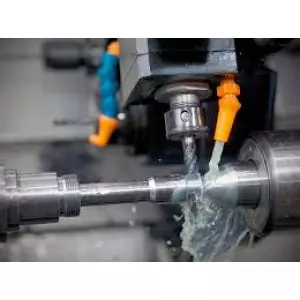- Home
- About Us
- Products
- Services
- Updates
- Gallery
- Contact Us
Tool Maintenance Service In Ahmedabad
Details of Tool Maintenance
Ensures Consistent Product Quality
Regular tool maintenance helps retain the exact shape, tolerance, and surface finish of plastic components. Without upkeep, mould wear can lead to defects such as flashing, warping, or inconsistent wall thickness. Cleaning, polishing, and re-lubrication restore mould accuracy. This ensures stable production cycles and high-quality output.
Used in Diverse Industrial Applications
These maintenance practices are used in diverse industrial applications such as automotive parts, electrical housings, packaging, and medical device moulding. Clean, functional moulds are essential for high-volume, precision-driven industries. Downtime due to tool damage directly affects delivery schedules and customer satisfaction.
Extends Mould Life and Reduces Replacement Costs
Proper maintenance significantly extends the service life of expensive mould tooling. By preventing corrosion, wear, and surface damage, businesses avoid frequent repairs or costly replacements. Scheduled servicing and inspections ensure long-term usability. This translates to better return on investment for manufacturing setups.
Includes Cleaning, Polishing, and Inspection
Tool maintenance involves a sequence of steps: removing residue, inspecting for cracks or wear, polishing cavity and core surfaces, and checking alignment. Cooling channels and vents are flushed to maintain performance. Worn-out pins, bushings, or ejectors are replaced before they affect moulding quality.
Reduces Production Downtime
Routine maintenance prevents unexpected breakdowns or tool-related failures during production. This keeps the injection moulding line running efficiently and avoids emergency repairs. Planned tool changeovers and preventive checks improve machine uptime. As a result, manufacturers meet deadlines without compromising on output consistency.
Maintains Dimensional Accuracy in Mass Production
Tool condition directly affects the repeatability of moulded parts, especially in high-volume runs. A well-maintained mould ensures every unit matches the intended design without frequent adjustments. This is vital in industries where tight tolerances and part uniformity are mandatory. Clients benefit from stable manufacturing output across multiple batches.
Improves Operational Safety and Reliability
A neglected mould can fail under injection pressure or heat, risking operator safety and damaging the machine. Maintenance ensures all mechanical parts, such as locking mechanisms, ejection systems, and cooling circuits, are functioning properly. This minimizes operational hazards and supports uninterrupted production.
Offered Product
Tool Maintenance
Ensure The Longevity And Optimal Performance Of Your Tools With Our Comprehensive Tool Maintenance Service. Our Expert Team Specializes In Cleaning, Sharpening, And Repairing A Wide Range Of Tools, From Hand Tools To Power Equipment. By Utilizing Advanced Techniques And High-quality Materials, We Restore Your Tools To Peak Condition, Enhancing Their Efficiency And Safety. Regular Maintenance Not Only Extends The Life Of Your Tools But Also Improves Your Productivity, Making It An Essential Inves... Read moreTool Maintenance Extended Service In Ahmedabad
Ensuring Precision And Extended Tool LifeAs A Dedicated Engineering And Industrial Service Provider, Our Company Specializes In Offering Tool Maintenance And Service To Ensure The Continued Accuracy, Reliability, And Productivity Of Critical Equipment Used Across Various Sectors. Tools Used In Manufacturing, Assembly Lines, Fabrication Units, And Machining Centers Require Timely Inspection And Servicing To Operate At Peak Efficiency. Leveraging Our Experience, We Provide Comprehensive Maintena Continue
Tool Maintenance And Service In Gota
– Across Diverse Manufacturing ToolsCovers Jigs, Dies, Punches, And FixturesBesides Moulds, Tool Maintenance Applies To Dies, Progressive Tools, Fixtures, And Stamping Punches. Proper Upkeep Involves Dimensional Inspection, Thermal Stress Checks, And Fatigue Crack Detection Using Specialized Instruments.Thermal Cleaning, Alignment & LubricationAll Movable Parts Are Cleaned In Thermal Ovens To Remove Residues. Post-cleaning, The Alignment Is Checked Using Coordinate Measuring Ma Continue
Expert Tool Maintenance For Industrial Units
Precision Tool CareWe Provide Tool Maintenance Services To Keep Industrial Tools, Dies, Molds, And Cutting Equipment In Top Working Condition. With Regular Cleaning, Sharpening, And Alignment, We Help Extend Tool Life, Reduce Breakdowns, And Improve Production Quality. Our Service Ensures Your Tools Remain Reliable During Every Cycle.Built With In-House ExpertiseOur Trained Technicians Handle Mechanical, Electrical, And Surface Wear Repairs For A Wide Range Of Industrial Tools. With Modern Continue




